Multichannel Outreach: Beginner’s Guide for Sales 2025
Contents
As the business world becomes more connected, engaging with your audience requires more sophisticated and versatile approaches.
That’s why SDRs and sales reps are turning to multichannel outreach.
Do you know why?
Well, because you can get amazing results with it!

In this LinkedIn Outreach campaign, I contacted +2000 people:
- I started with 2 emails
- Sent a LinkedIn connection request without a note
- Send 2 LinkedIn messages
The results:
- 55.5% of LinkedIn requests were accepted
- 46% of people replied to the messages
Want to get the same results?
Read this blog post carefully, as I’ll uncover:
- What Is Multichannel Outreach?
- What Are The Advantages Of Multichannel Outreach?
- 5 Channels To Leverage For Sales Outreach
- How To Launch Your Multichannel Outreach Campaign?
- The Ultimate Multichannel Outreach Strategy With Message Templates
Let’s dive in.
What is Multichannel Outreach?
Multichannel outreach describes how to reach out to your leads using different channels.
Multichannel outreach isn’t just a tactic-it’s a transformative approach.
Diversifying your outreach across channels like LinkedIn, email, SMS, and cold calling can increase your visibility and chances of generating leads.

An example of multichannel sales outreach could be:
- Start by sending emails.
- Then LinkedIn messages.
- At the end try to call your lead on his phone if you get no reply.
What Are The Advantages Of Multichannel Outreach?
5 advantages of the multichannel approach:
- You do outreach without emails
- You don’t have single points of failure
- Your approach seems less pushy
- You activate reciprocity bias
- You find your prospect’s favorite channel

1. You do outreach without emails
If you focus only on email outreach, you will abandon the leads for which you cannot find the emails.
That’s nonsense.
Why did you put these leads on your lists in the first place?

Because you thought they were potential customers.
Most email finders will find 70-80% of the emails in your lead list.
You can’t abandon 20% of your leads when you launch a prospecting campaign.

That is why it’s essential to have a fallback channel.
It can be LinkedIn, cold calling, or X. That will dramatically increase sales engagement.
That’s up to you.
But pick at least one.
Don’t give up on any leads before you get a reply. Whatever the channels you will use.
2. You don’t have single points of failure
You have single points of failure if you rely on a single channel for your outreach.
Let’s say you are only using cold email. What happens if all your emails start going to spam?

Your business will be at a standstill.
Be aware that technical problems could impact your email domain reputation for some days.
Same thing for LinkedIn.
If you rely 100% on LinkedIn outreach, what happens if your LinkedIn account gets restricted?
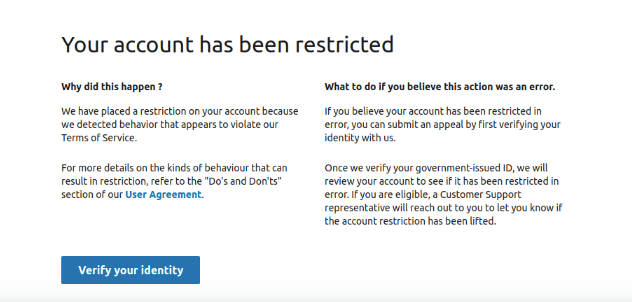
Be aware that might happen if you use LinkedIn automation tools.
That can also happen on X.
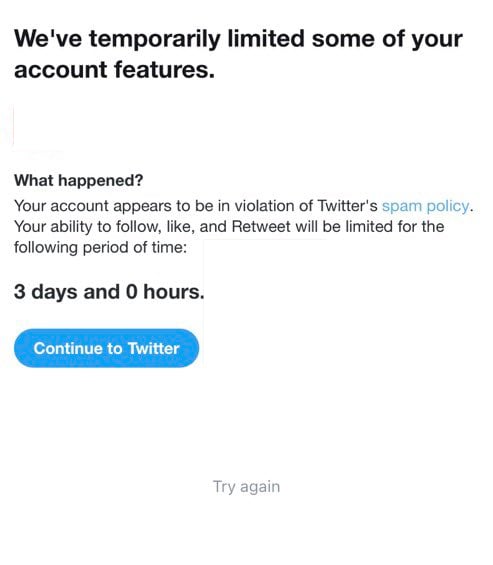
Do you get my point now?
Diversifying your sales channels makes your lead generation more robust and crisis-resistant.
3. Your approach seems less pushy
Your approach will look pushy when you follow up more than 3 times on a single channel.
Nobody likes to be harassed by strangers, especially if their messages are not personalized.
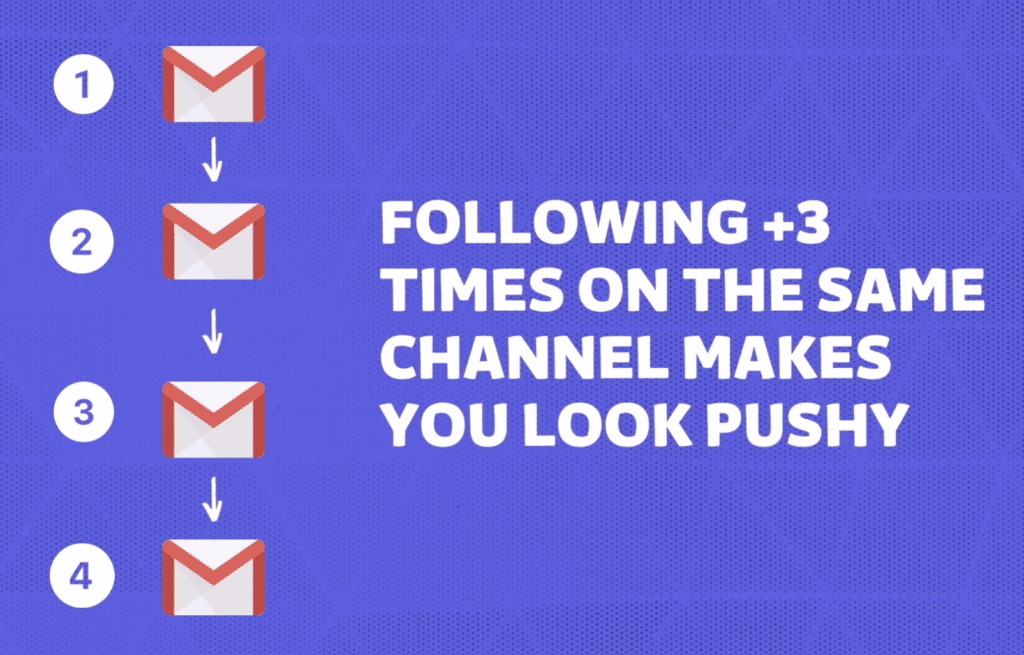
On the contrary, if you multiply touchpoints and switch channels while you follow up, your hyper-personalized messages will look like a brand-new conversation.
That’s why the response and conversion rates on multichannel campaigns are much higher.
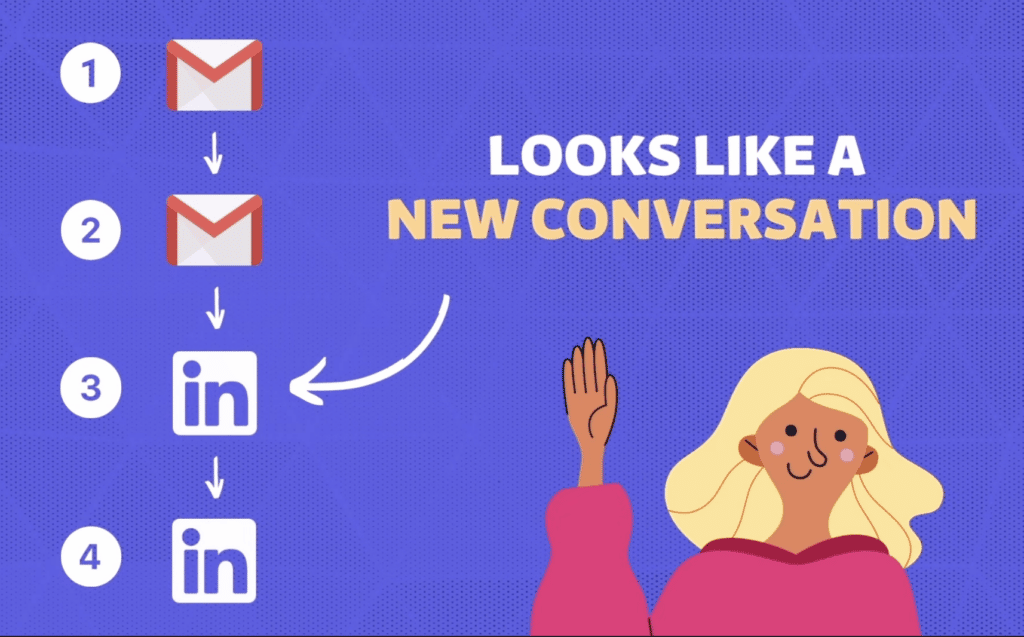
This gives your approach a “fresh start” and makes your prospects reconsider your offer, as they might not even remember you sent them an email.
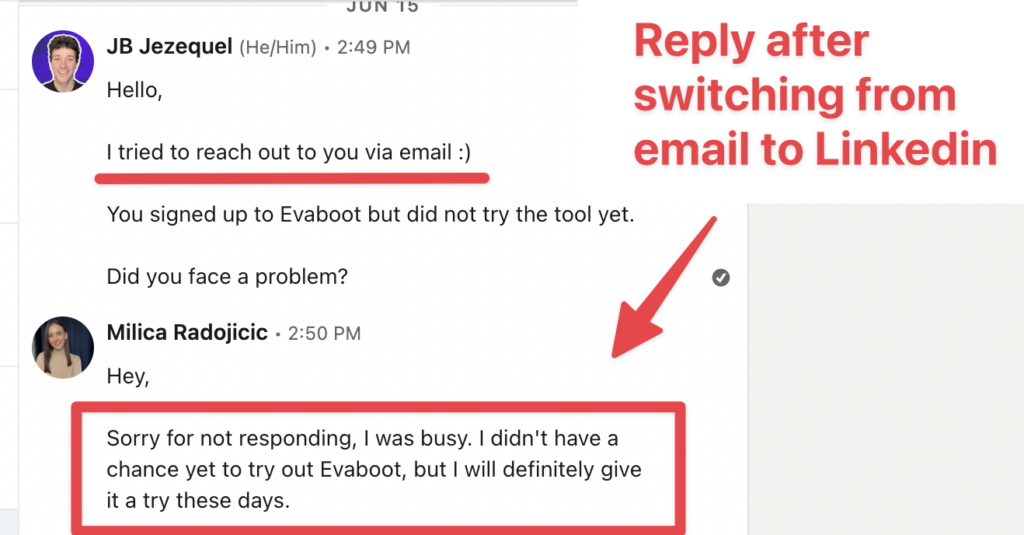
4. Your activate reciprocity bias
Your prospects appreciate the effort you make to do some research and switch channels.
By doing that, you differentiate yourself from the competition.
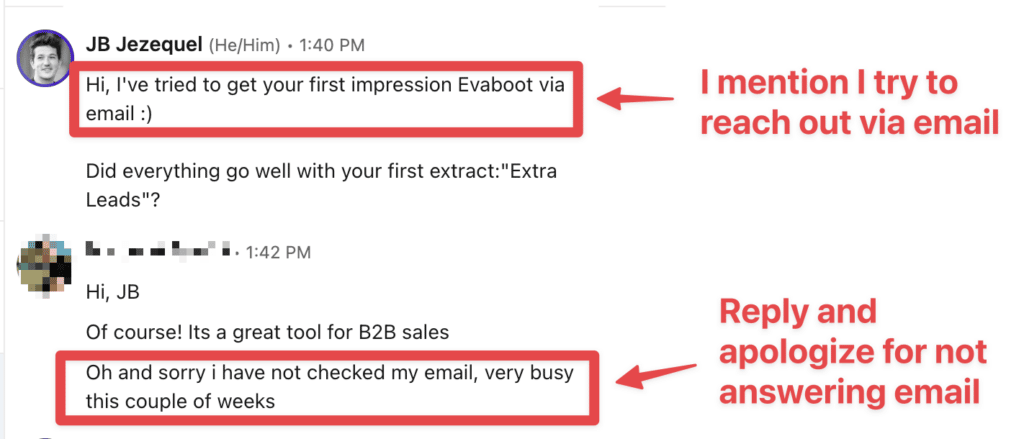
I have noticed that this creates a debt in your prospect’s mind.
This is called reciprocity bias.
When someone makes a lot of effort to reach out to you, you feel that this effort should be rewarded.
Your prospect knows it’s easy for you to follow up on the same channel.
It doesn’t require a lot of effort.
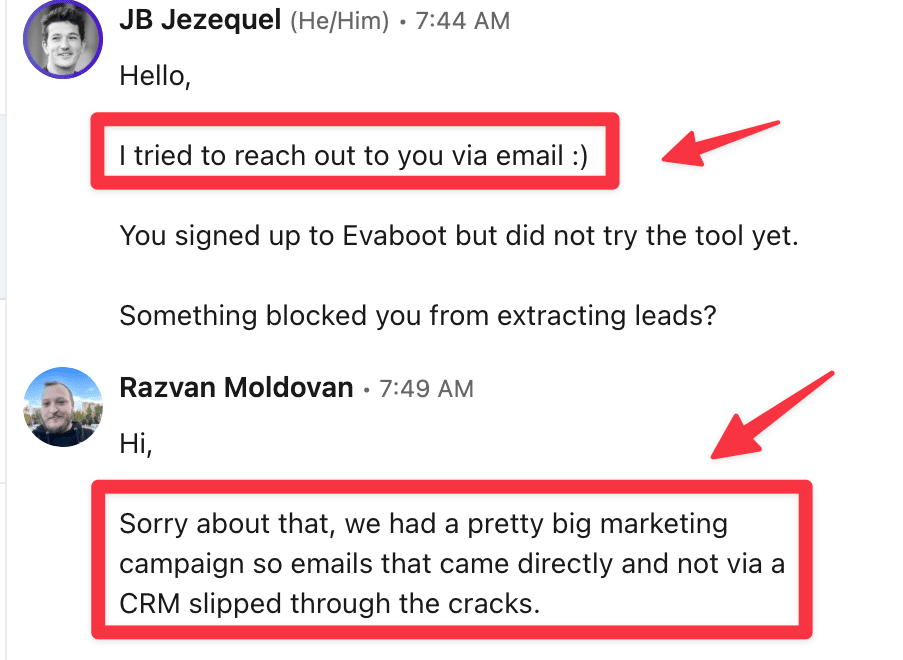
You write a few lines and press Send.
On the contrary, most people will value the fact that you switch channels as a sign that you want to talk to them.
5. You find your prospect’s favorite channel
People have different habits.
Some prefer talking on LinkedIn. Some prefer exchanging via email. Some prefer to talk on the phone.

That is something you can’t guess before getting to know someone.
What is the best way to discover your prospect’s favorite channel?
Try them all.
Imagine focusing on LinkedIn, whereas your prospect only connects to the app once a week.
You don’t have much chance of getting an answer.
5 Channels To Leverage For Sales Outreach
Here are 5 top channels you can use for multichannel outreach:
- LinkedIn DMs
- LinkedIn InMail
- Cold Calling
- X
1. Email
Email is the most common prospecting channel.
It’s easy to set up and scale, as you can send up to 150 emails per day per email address.
| Pros | Cons |
|---|---|
| Volume (150/day) | High competition |
| Easily scalable | Low Reply Rare |
| Spam Filters | |
| Pay to find emails |
However, you need to collect the emails of your leads.
You will never find 100% of them.
You also need to take care of your deliverability to avoid spam. You can even use an AI email assistant to craft engaging emails.
2. LinkedIn DMs
LinkedIn is the 2nd most popular prospecting channel.
You can contact people by sending connection requests or InMails.
The huge advantage of LinkedIn is that all LinkedIn profiles are public.
| Pros | Cons |
|---|---|
| Free | Low volume (100 requests/week) |
| High reply rates | Hard to scale |
| No deliverability issues |
It is easy to contact your leads there as long as they have a LinkedIn profile.
However, to be able to send messages, you need your leads to accept your connection request first.
This is the only drawback compared to email, where you can land directly in the inbox.
3. LinkedIn InMail
LinkedIn InMail credits allow sending DMs that land directly into your prospect inbox.
So you don’t have to send a connection request first.
They are handy as they bypass the LinkedIn weekly invitation limits.
| Pros | Cons |
|---|---|
| Land directly in the LinkedIn inbox | Low volume (50/month) |
| High reply rates | No follow-ups |
| No deliverability issues | Expensive |
However, you must be subscribed to one of the LinkedIn premium offers to get InMail credits.
With LinkedIn Sales Navigator, you get 50 InMail credits per month.
4. Cold Calling
If your target does not reply to your emails and LinkedIn messages, you might want to try to find their phone number and cold call them.
| Pros | Cons |
|---|---|
| Direct line with prospect | Low volume |
| Low competition | Need to find the phone number |
| High reply rate | Tools to find phones are expensive |
Here’s how to find phone numbers on LinkedIn.
What is nice about integrating cold calling into multichannel sequences is that you can mention your email and LinkedIn messages in the call.
That way, you don’t appear like a stranger.
The fact that the prospect didn’t reply to your message also gives you a legitimate reason to call them.
5. X
X is not the most popular B2B prospecting channel, but many people post and consume B2B content there.
The good thing is that X inboxes are less flooded than email and LinkedIn.
| Pros | Cons |
|---|---|
| Low competition | Not the favorite channel of most people |
| High reply rate | |
| No deliverability issues |
You might have a good chance to stand out and get many replies.
If your potential customers are present on X, it’s worth a try.
How To Launch Your Multichannel Outreach Campaign?
Now that you know what channels you can use let’s see how to launch your first multichannel outreach.
- Use a solid multichannel outreach tool
- Extract contact details from LinkedIn
- Warm-up your emails and LinkedIn account
- Write your prospecting messages
- Prioritize your channels
- Keep track of all interactions in your CRM
- Publish on LinkedIn
- Run LinkedIn Ads
1. Use a solid multichannel outreach tool
There are many prospecting tools for building multichannel cold outreach sequences, like:
- Lemlist
- Expandi
- Waalaxy
- LGM
- And more…
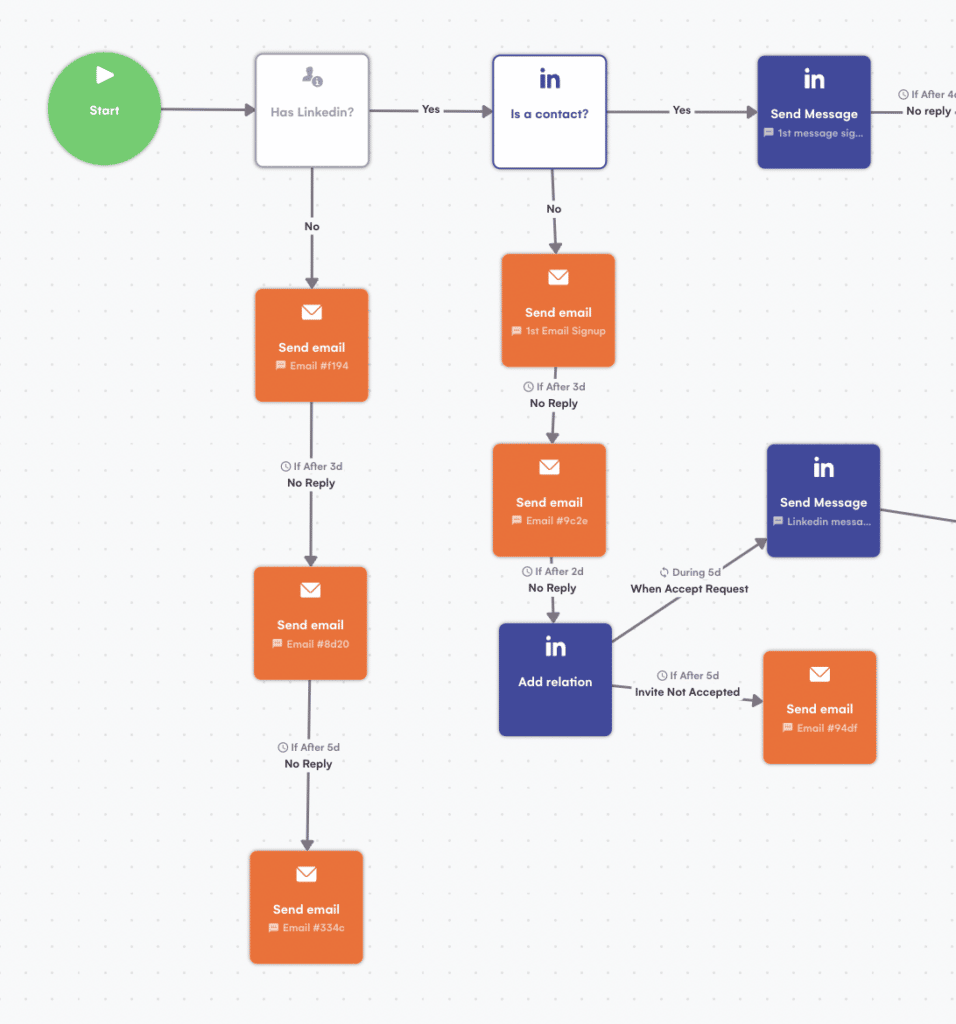
If you want to know more about how it works, you can check the video at the beginning of this article.
I use LGM as they have a visual sequence builder, and the product is solid.
Your prospecting campaigns can quickly become messy if your outreach tool is not technically solid and LGM never fails.
2. Extract contact details from LinkedIn
You must build prospect lists with their email to launch your first multichannel outreach campaigns.
It’s a mandatory step in your sales process to build email campaigns.
To easily do this, you can use LinkedIn Sales Navigator + Evaboot like this:
- Build your lead list on Sales Navigator
- Extract the data into a CSV with Evaboot (including LinkedIn URLs)
- Find email with Evaboot
Once your lead list is enriched with professional emails, you can upload it into your favorite outreach tool.
In this masterclass, I show you how to use Sales Navigator effectively to find your ideal customer profile.
3. Warm-up emails and LinkedIn accounts
If you are starting LinkedIn outreach, you need to warm up your email and LinkedIn account.
If you start sending many messages right away, your emails may land in spam, and your LinkedIn account may be restricted.
To warm up your emails, you can use Mailreach, which efficiently avoids spam when sending cold emails with a new domain.
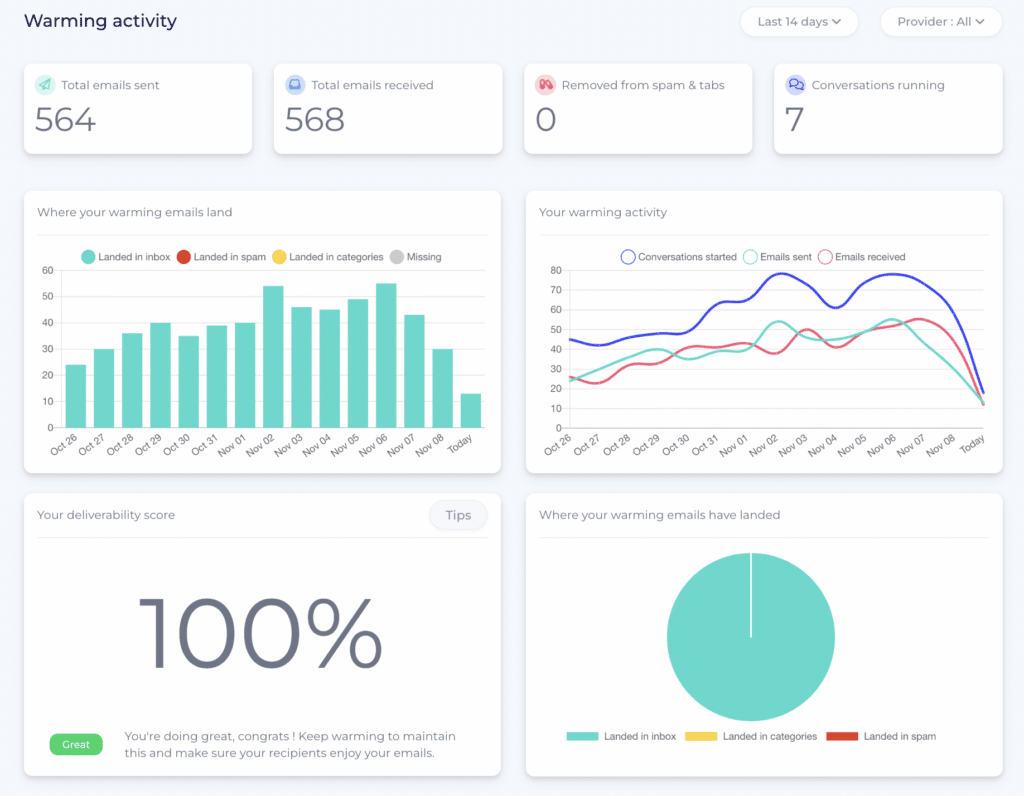
To warm up your LinkedIn accounts, no need to buy any service.
If your LinkedIn account is inactive, send a few connection requests and messages every day for 2 weeks before starting any automation.
4. Write your prospecting messages
Although you can have thousands of leads and the best outreach tool in the world, you won’t generate meetings with qualified leads if you don’t work on the copywriting of your LinkedIn messages and emails.
Your messages should be:
- Short
- Personalized
- With a clear proposition value
In this video, you can learn how to write cold outreach messages that get replies.
Hyper-personalization is the key to increasing your reply rates.
5. Prioritize your channels
You have 5 channels at your disposal.
But where to start?

I like to prioritize these channels by their outreach capacity and popularity.
That gives:
- Emails (150 per day)
- LinkedIn (100-200 per week)
- Cold Call (depends)
- InMails (50/month)
- X (500/day)
As you can see, LinkedIn connection requests and InMails are scarce resources.
You don’t want to waste them.
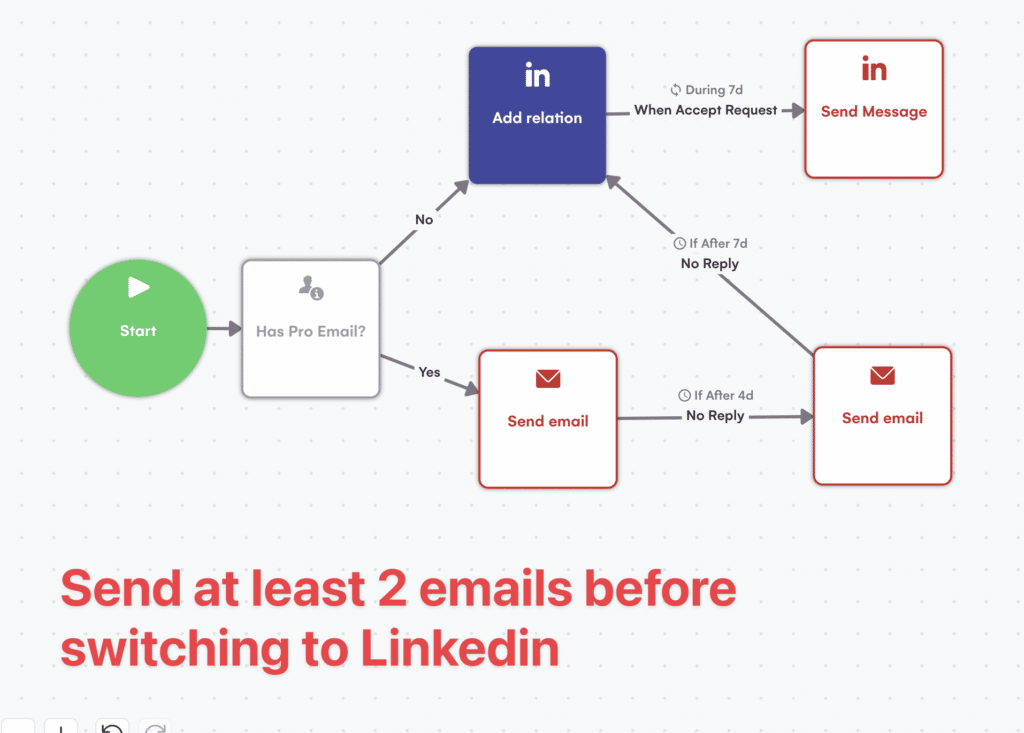
That is why it is better to save them for leads without emails and leads who don’t reply to your emails.
The same is true for phone calls; they are time-consuming. So, better save them for people who do not respond to emails or LinkedIn messages.
This is a good way to start.
Then, you can re-prioritize while you learn more about your target audience and their favorite channels.
6. Keep track of all interactions in your CRM
If you launch multichannel cold outreach campaigns, you need a place to centralize all your interactions with prospects.
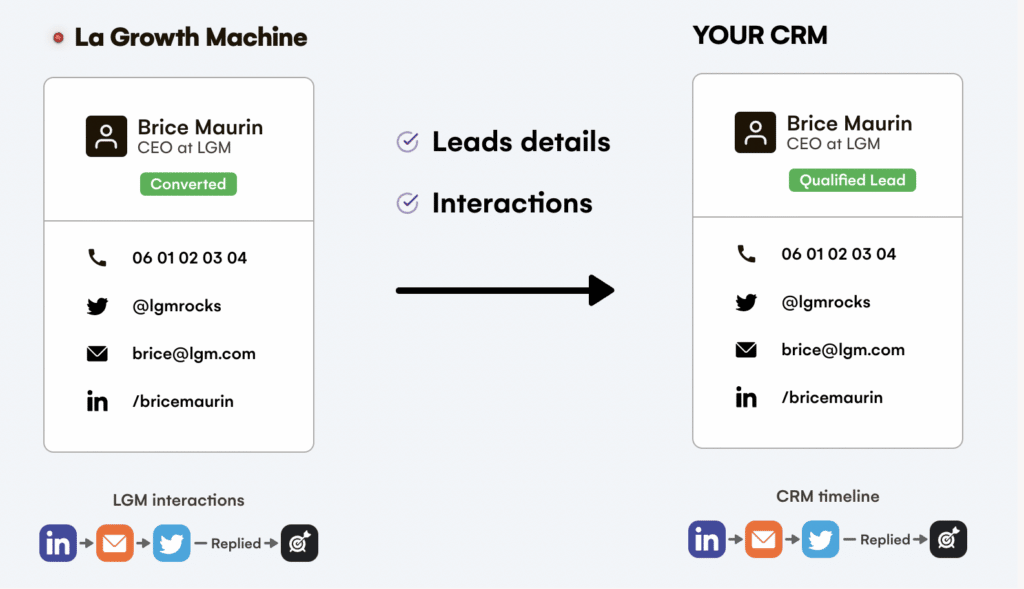
Otherwise, it will be really difficult to remember who replied and where.
LGM offers this functionality. You can connect their tool with your CRM.
If you don’t have a CRM, they also synchronize your email and LinkedIn inboxes with their tool so you follow all the history of your interaction with your leads.
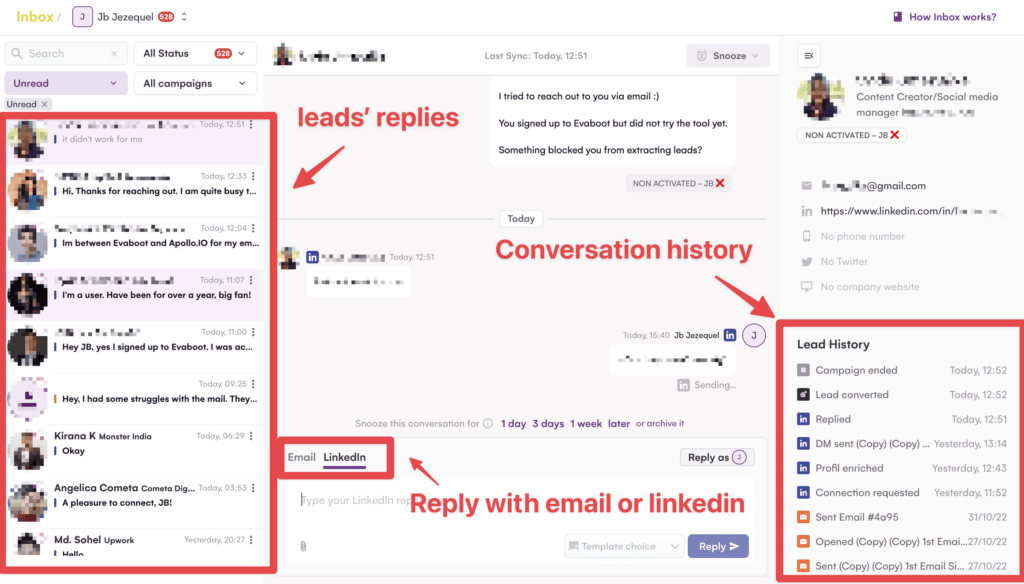
If you have a sales team, LGM also makes it effortless to connect your salespeople’s accounts and manage all the replies to your campaigns in one place.
You don’t need to work for hours on Zapier to build these connections yourself.
That is what makes it a great sales engagement platform.
Note on email tracking
If you know your campaigns are working, and you are sending a lot of emails, it might be a good idea to deactivate your email tracking tools to increase deliverability.
Indeed, the tracking codes inside your emails can be detected by email servers and decrease your deliverability.
7. Publish on LinkedIn
Sending messages is not the only way to follow up on LinkedIn.
When prospects see your LinkedIn posts, they can comment or reach out directly to you.
That’s a way of following up.
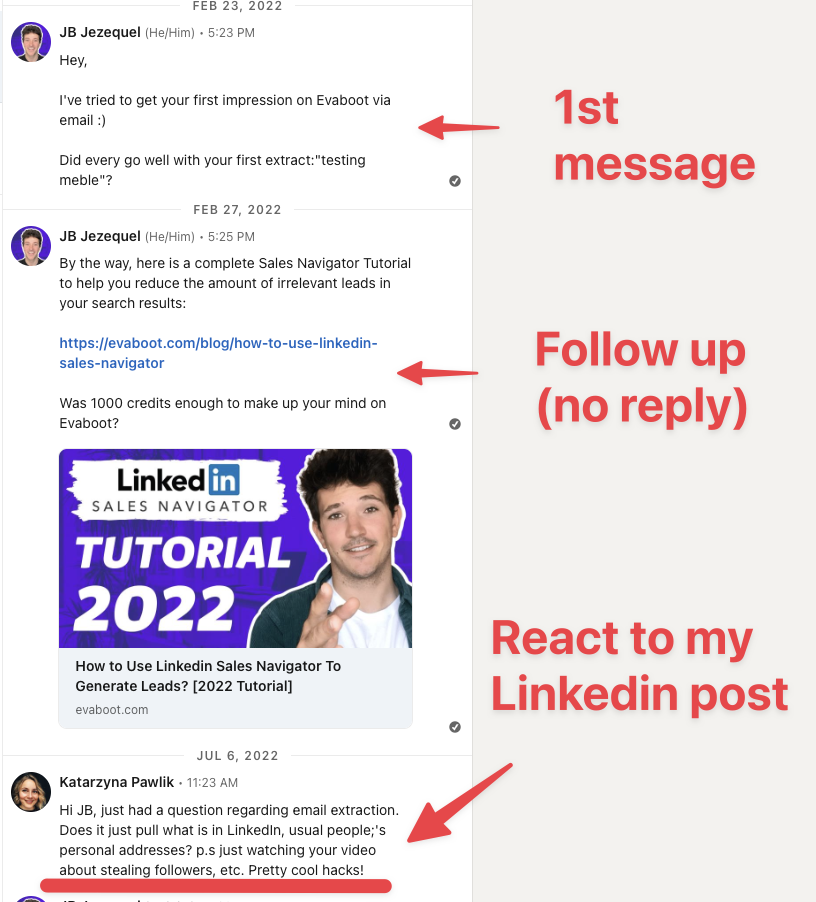
Combining LinkedIn marketing and LinkedIn outreach is an efficient strategy.
In this example, I’ve:
- Sent 2 emails
- Sent a LinkedIn connection request
- Sent LinkedIn messages
- Published a LinkedIn post
You can see that the prospect didn’t reply to my messages but reached out to me directly after seeing one of my LinkedIn posts.
When you are thinking about multichannel sales outreach, don’t forget content.
Social selling is sales. It can be part of the mix, too.
8. Run LinkedIn Ads
What if I told you you can target your prospecting audience on LinkedIn Ads?
It’s possible if you combine Sales Navigator and LinkedIn Ads.
That way, you can run different types of LinkedIn ads that can boost your reply rate.
You can run the ads before starting the prospecting campaign to warm your leads.
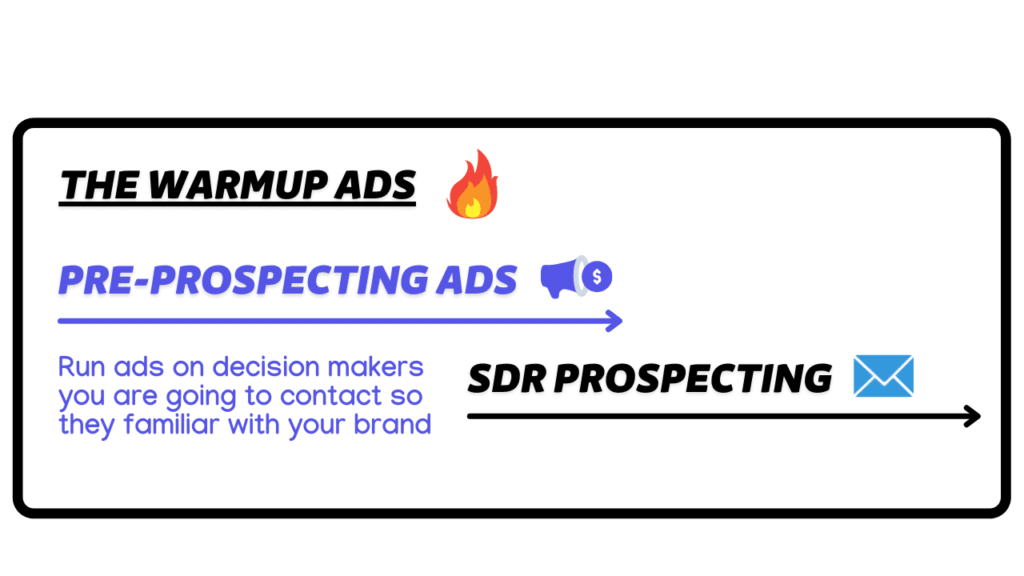
You can run the ads during your campaign so they can act as a follow-up.
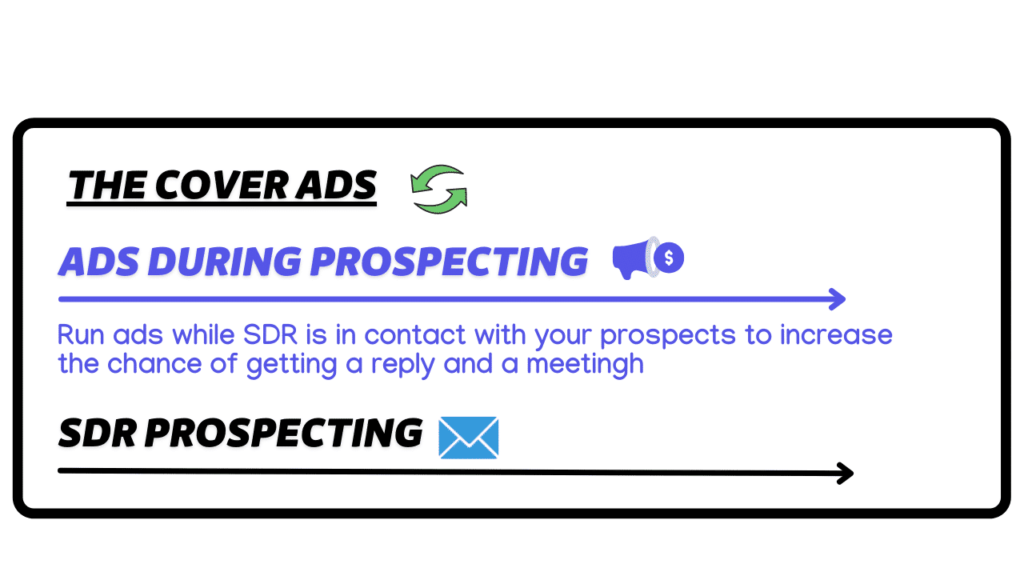
You can also run ads after your campaign so you continue to retarget potential customers even if they don’t reply to your messages.
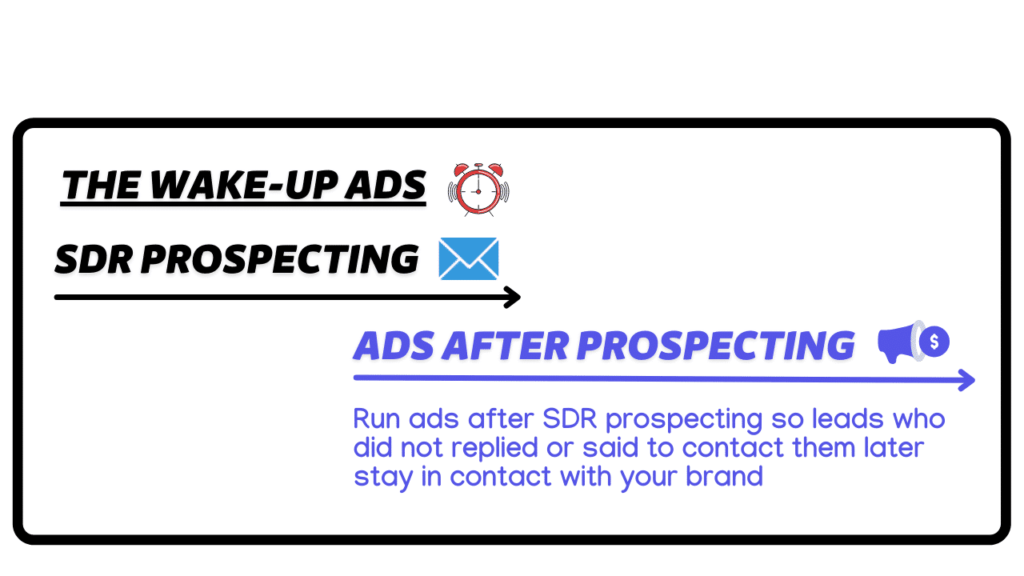
Maybe some of them are interested in the offer, but the timing was bad.
These ads allow you to stay top of mind for these kinds of prospects.
As for content, ads can also be part of your multichannel outreach mix.
Don’t forget about them.
The Ultimate Multichannel Outreach Strategy With Message Templates
Here is a multichannel outreach workflow to send your first campaigns.
I also added message templates you can take inspiration from.
Ultimate Multichannel Outreach Strategy
- Start with 3 emails
- Send a LinkedIn connection request
- Send 3 LinkedIn messages
- Try 3 phone calls
- Send a LinkedIn InMail
- Send 3 Twitter DMs
- Add to LinkedIn Ads audience
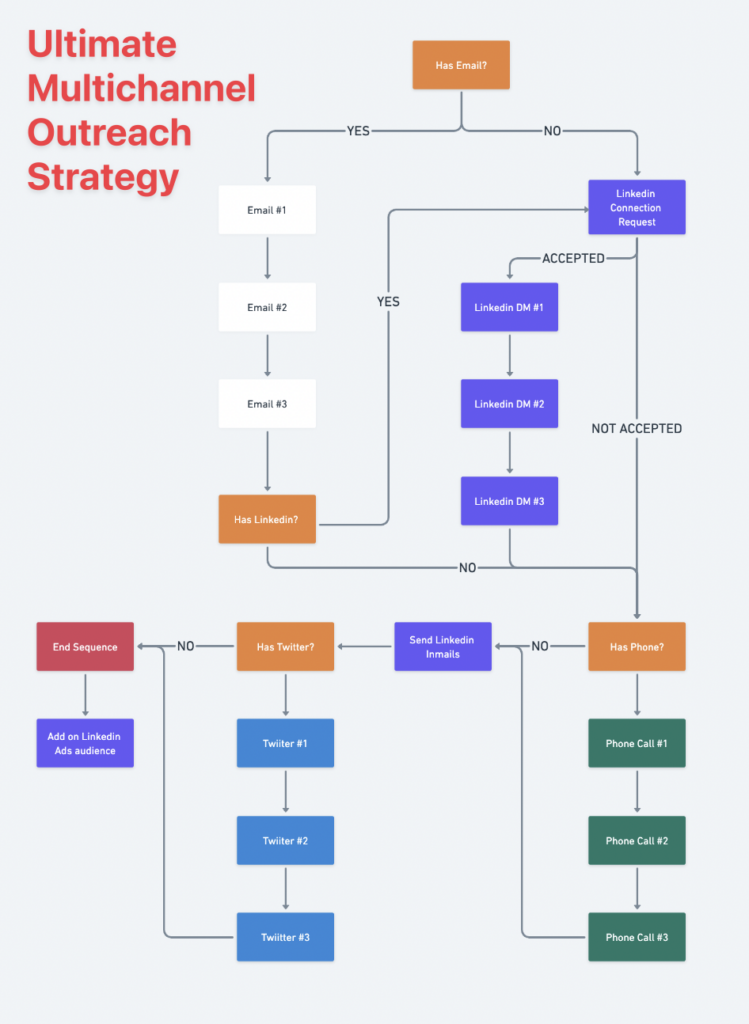
If that seems a lot to you. Don’t be afraid to send follow-ups.

A study by Waalaxy showed that after 4 LinkedIn messages, almost everybody replies.
A “No” is worth more than silence.
With a “No”, you are 100% sure you can move on to another prospect.
Email #1
For your first email, you can use what I call the RABT Formula:
- Reason for outreach
- Ask a question
- Backup with Data
- Tease your solution
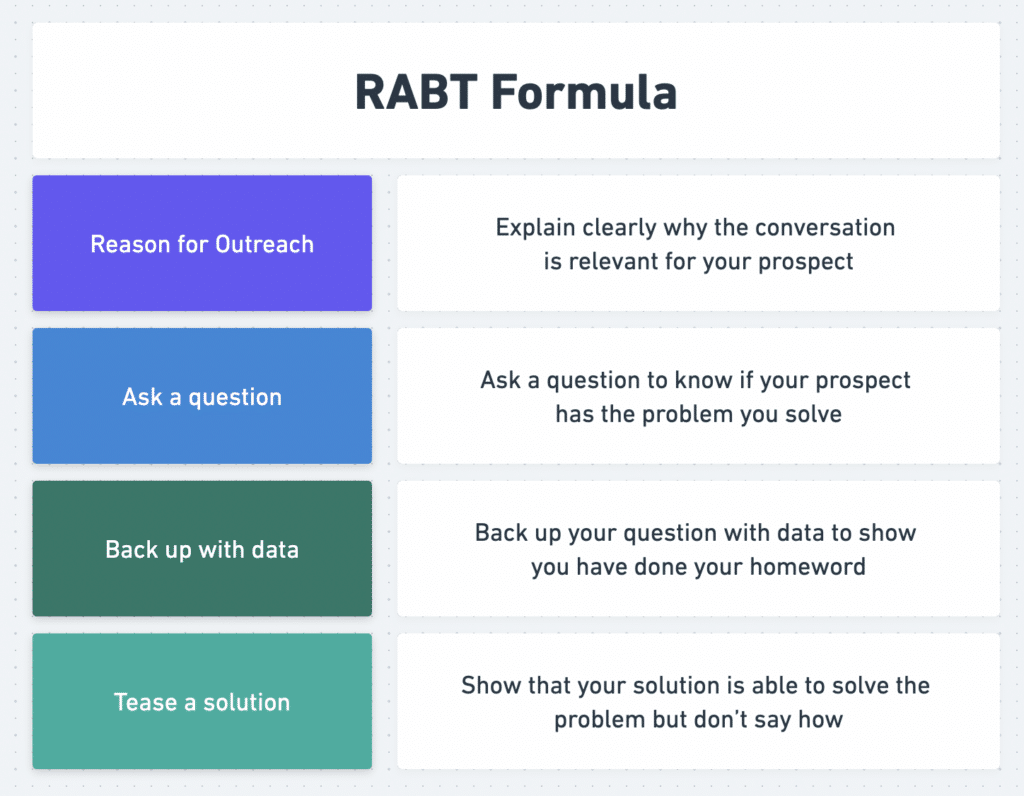
I used it on several of my campaigns, and it can guarantee a +20% reply rate.
This particular message got a 28% reply rate.
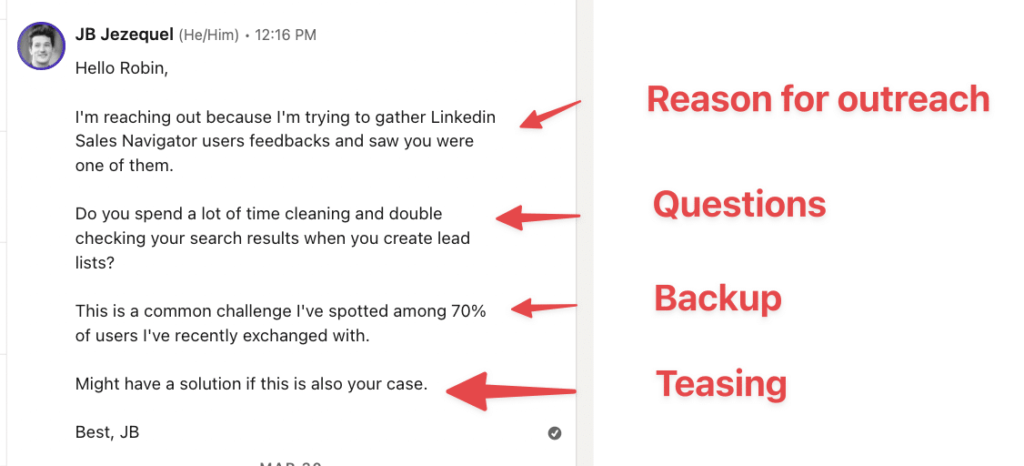
Regarding the subject lines of the messages, I have 2 rules:
- One word
- Low caps
Make it look like a colleague has written it between 2 sandwich bites.
Email #2
For the 2nd email, you can send a case study your prospect can learn from.
Template
Btw here is a case study about <topic>.
Let me know this is of interest to you 🙂
Email #3
For the 3rd email, you can send a client testimonial
Template
I just found that we helped a company similar to yours.
Here is their testimonial: <link>.
They achieve <achievement>.
Would you be interested in getting the same results?
LinkedIn Message #1
In your 1st LinkedIn message, it is super important to leverage the reciprocity bias.
Mention that you tried to contact your prospect via email.
Template
Hello,
I tried to reach out to you via email 🙂
Sent some content that I thought might be insightful for your business.
Let me know if it was helpful.
LinkedIn Messages #2 and #3
You can resend the case study and the client testimonial for the 2nd and 3rd messages.
There is a high chance your prospect didn’t read them.
Phone Calls
Make sure to leverage reciprocity bias here, too.
If your prospect answers your call, start by:
Call Introduction
“Hey, my name is <name>,
I sent you several emails and LinkedIn messages last week.
Did you see them?
…
Remember to leave a voicemail, send an SMS, or WhatsApp message if the prospect does not reply to leave a trace of your action.
LinkedIn InMail
When you send your LinkedIn InMail, mention your phone call in your text message.
Subject: Tried to call you
Hey,
I tried to you join several times on the phone last week.
Wanted to know if <topic> is currently a challenge at <company>.
I think <My app/other solution> can be a good solution for you. (puta link)
Let me know if you have questions.
X Messages
Same thing here:
- Use reciprocity bias in message #1.
- Send case study and client testimonial in messages #2 and #3
Conclusion
Now, you understand better how multichannel outreach strategies can drive unparalleled engagement and convert prospects into customers.
Don’t hesitate to test different sequences and try various channels to find the one that works best for each of your outreach campaigns.
FAQ
How to create a strategy for different outreach channels?
Here is how to get started with multichannel outreach:
- Use a solid multichannel outreach tool
- Extract contact details from LinkedIn
- Warm up your emails and LinkedIn account
- Write your prospecting messages
- Prioritize your channels
- Keep track of all interactions in your CRM
- Publish on LinkedIn
- Run LinkedIn Ads
What are the common mistakes in multi-channel outreach?
One of the biggest pitfalls of multichannel outreach is relying on just one channel. Using too many channels or sending too many messages can also be detrimental.
This can saturate your audience and potentially alienate them from your brand.
What is a multichannel outreach?
Multi-channel outreach uses multiple sales channels to connect with leads.
For example, you might first contact them with a cold email, then follow up with an InMail on LinkedIn or a cold call to their office phone.
What is an example of a multichannel marketing?
Multichannel marketing is like multichannel outreach. This time, you use various channels to promote your brand.
These channels might be digital, such as a Facebook page, an X feed, an email list, or traditional, like billboards, metro signs, or newspaper advertisements.
What are the advantages of a multichannel approach?
Here are som advantages of a multichannel approach:
- Outreach is possible without relying only on emails.
- It eliminates single points of failure.
- The approach appears less aggressive.
- It leverages reciprocity bias.
- It helps identify your prospect’s preferred channel.


![LinkedIn Prospecting: The Ultimate Guide For Sales [year] 55 linkedin prospecting](https://evaboot.com/wp-content/uploads/2022/12/linkedin-prospecting-768x432.png)
![LinkedIn Limits For Connection Requests & Messages In [year] 56 how many connection request can i send](https://evaboot.com/wp-content/uploads/2022/02/how-many-connection-request-can-I-send-768x432.png)
![LinkedIn Account Restricted? Here is How to React in [year] 57 account restricted](https://evaboot.com/wp-content/uploads/2023/08/ACCOUNT-RESTRICTED-768x431.png)
![The 35 Best LinkedIn Automation Tools in [year] [Free & Paid] 58 automation tool](https://evaboot.com/wp-content/uploads/2025/02/Automation-tool-1-768x430.png)

![LinkedIn InMail Messages: What is It and How Do They Work? [[year] Guide] 60 use linkedin inmail](https://evaboot.com/wp-content/uploads/2025/02/Use-Linkedin-Inmail-768x432.jpg)